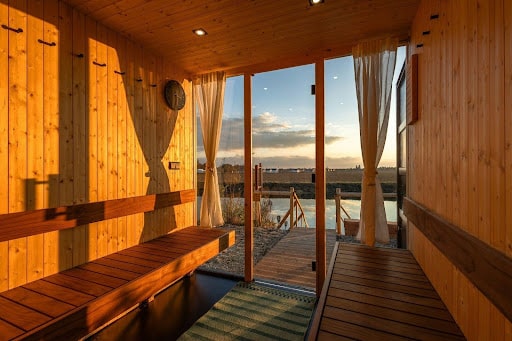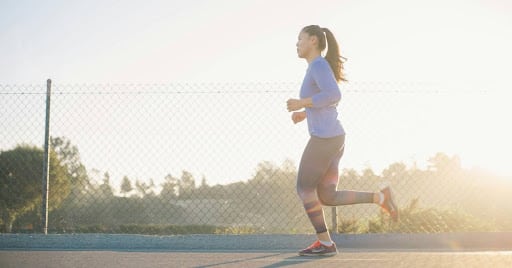Stretching should feel good and leave you feeling good for some time afterward. People naturally avoid anything they think will cause pain and instead look for activities that help them feel good. Stretching is one thing that often feels better than cardio or weight training, although all three should be parts of your fitness regimen. Doing the right poses or postures can trigger the natural reward system in your body so you stay motivated to keep doing them. Keep reading to find out why flexibility matters, tips to keep in mind, and specific poses you should try.
Why Flexibility Matters
If you’re wondering why flexibility matters, then you should know there are several good reasons. They include feeling good, slowing aging, keeping body parts healthy, and reducing the chances of injury.
Helps You Feel Good
For starters, stretching improves bloodflow. Any muscle you stretch sends signals to the rest of the body to send more oxygen through the bloodstream, and this in turn flushes out metabolic waste. Stretching also activates the parasympathetic parts of your nervous system responsible for sleep and digestion. You’ll also enjoy a release of endorphins. Proper stretching should leave you feeling more calm and relaxed.
Keeps Your Muscles Young
Aging wears down joints and makes muscles get smaller. Many people lose flexibility as they age, but that doesn’t mean the process is permanent. The right stretching regimen can restore a lot of the range of motion that people enjoyed when they were younger, and that can help them keep moving, stay active, and enjoy life activities. Proper posture helps avoid muscles and joint degeneration in the later stages of life, and the feelings of energy and vigor can help you feel much younger than would otherwise happen.
Great for Joints, Bones, and Strength
While there are benefits from flexibility for the overall body, you’ll specifically feel them in the musculoskeletal system. However, there are secondary benefits for your lymphatic system. It requires gravity and motion to keep things moving throughout the body, which makes it different from the self-powered circulatory system. Enough regular movement keeps the lymph system from getting stagnant and less able to fight off disease. The lymph system is responsible for trapping toxins, cells, and bacteria your body doesn’t want until removed. As such, anything that gets synovial fluid in your body flowing helps their health improve and fight off inflammatory diseases, such as arthritis.
Lower Chances of Injury
Improving your flexibility might reduce your odds of injury while exercising or just going through your daily life. You should enjoy improved performance when doing physical activities, and your muscles won’t be damaged as easily with better blood circulation. These benefits are compounded when you choose stretches specific to any sports or exercise you do regularly or focus on specific parts of your body that need more care than others. Avoid injuring yourself while stretching by holding poses for proper amounts of time, avoiding bouncing, and easing back when something feels painful.

Things You Should Remember
When done regularly, stretching can have compounding benefits over time. However, certain things must be remembered to gain the benefits while minimizing potential risks or downsides.
Warming Up Before Working Out
Don’t dive in too quickly. While feelings of calm and relaxation might happen on the first day, the real benefits can take several weeks to manifest. Even stretching requires warming up a bit and cooling down. Five to 10 minutes of warm-up activities work for all your primary muscle groups and open range of motion. When you get a little loose before deep stretches, your actual stretching can get deeper into the muscle tension holding you back. It can be as simple as doing basic stretches before you repeat the routine to deeper levels.
Staying Consistent
Start small, and build your intensity gradually. Moving from a sedentary lifestyle to physical activity can result in serious muscle soreness; this discomfort and pain might not indicate injury looming, but it can sap your motivation to keep stretching. Tight muscles are more likely to get injured, but stretching them out enough to avoid injury will take time. Overtraining is a common mistake for those new to stretching, but undertraining is a lurking danger for people experienced with physical activity.
Being Patient
It can be hard to look forward to feeling more flexible a month from now when you’re twisted like a pretzel and on the verge of holding your breath. However, your body doesn’t get taut overnight, and you won’t release all the tension quickly. Treat it like a journey, because it is one.
Conscious Breathing
Maintain conscious breath with all your stretching. Trying too hard to get each stretch right can mean holding your breath, which can mean physical tension. That’s the very thing you’re trying to release and minimize. Conscious breathing helps bring more refreshing oxygen into your body and helps your circulatory system pump fresh nutrients into muscles that are getting more elastic.
Massage Work
Stretching isn’t the only way to release tension in your body, and massage therapy is something to consider if you want to improve and maintain flexibility and range of motion. Workouts can mean soreness, no matter how limber you might be, so regular massage therapy can help your muscles and joints heal from all your activity. You’ll preserve your success and keep going.

Stretches You Should Do
Doing stretches can help keep you limber, but everyone is different in terms of how flexible they are right now. Modify these poses as you need to. Also, remember that your flexibility will change over time and from day to day, so knowing modifications helps you find the safest versions of these poses regularly.
Seated Side-to-Side Stretch
This flexibility exercise is one you need an armless chair for. Sit in it, and have your hands resting comfortably beside you. Bend towards one side, and let the hand on that side slide down the chair and get closer to the floor. Hold this pose when you feel a stretch on the opposite side. Return to your starting position, then repeat on the other side.
Cat Cow
Use a mat for this flexibility, and include extra padding under your knees if it helps you feel more comfortable. Kneel on your mat, and then place your hands in front of you on the floor. Your hands should be as wide apart as your shoulders, and your knees must stay right under your hips. Take a deep inhale as you curve your lower back while raising your head. This should tile your pelvis up into the “cow” phase. Take a deep exhale to bring your abdomen in. As you do this, arch your spine while lowering your pelvis and head into the “cat” phase of the pose. Do several repetitions.
Lying Twist
You should use a floor area spacious enough for your gym or yoga mat for this flexibility exercise. Roll out your mat, then lie on it on your back. Bend your knees so you can put the bottoms of your feet level on the floor, then point your knees to the ceiling. Put enough pressure on your feet so that your hips lift slightly off the floor, then move your hips approximately 1 inch to the right; you do this so your hips can stack on top of one another in the actual twist. During an exhale, draw the right knee towards your chest, and lay your left leg flat across the floor. Actively flex your left foot throughout this part of the pose, and take a breath in. Exhale before crossing your right knee across your midline towards the floor on your left. This should result in your right hip being stacked over the left. If you want, hook your right foot right behind your left knee. Start opening your right arm in the right direction, but keep it aligned with your shoulders. You can rest your left hand on your right knee or extend it so your arms make a T shape. Your palm should be facing the ceiling. Face your head towards the right, and let your gaze fall over your shoulder towards your right fingertips; skip this step if your neck doesn’t like it. Use your exhalations to release your right shoulder and left knee to the floor. Do this pose in a range of five to 10 breaths. When you want to exit the pose, inhale as you roll onto your back. Draw your right knee towards your chest when you do this. Release both legs back to the floor to neutralize your spine; hold for several breaths before you repeat the pose on the other side.
Forward Fold
This is a standing pose, and you need to start with your feet being approximately hip-width apart. Bend your knees slightly instead of locking them, and keep your arms at your sides. Exhale your breath when you fold forward, starting from the hips, before moving your head towards the floor. Relax your shoulders, and tuck your chin while moving down. Mentally visualize the top of your head extending your spine towards the floor. Remember to keep slightly bent knees to protect your back. If possible, use your fingertips to touch the floor. Alternatively, wrap your arms around both legs if that feels good. Keep breathing, and hold this pose for 30 to 60 seconds. Bend your knees to start rolling up slowly; start with your lower back and stack your vertebrae one at a time while you return to standing.
Child’s Pose
The child’s pose is great for stretching back and hip muscles. Kneel on your floor or mat, then sit on both knees. Start leaning forward while keeping your buttocks on top of your heels. Your forehead should eventually rest on the floor. Line up your arms beside your legs, and face your palms toward the ceiling. Your inhales and exhales should be slow and deep. Hold the pose for a minimum of eight breaths.
Neck Rotation
This pose involves head rotations from one side to the other. Do these rotations slowly, and be gentle with yourself. Keep your motions small, and never turn your head totally to one side or the other. A good safety move is keeping your chin up from your chest. Never let it drop that low; keep it level with the ground around you. Do 10 repetitions before moving on to the next exercise.

Figure Four
To start the figure four pose, choose a comfortable place on the floor to lie down. Whether on the actual floor or a mat, make sure your feet are flat on the chosen surface. Next, cross your right ankle across your left knee, but make sure your right foot stays flexed. Start bringing your left knee into your chest. Reach your right hand between your legs, then interlace your fingers just under your left knee. Use your arms to pull your left knee closer to your chest, but stop when you feel the stretch in your right hip and glute. Remain in this pose for at least five breaths, but go as long as 2 minutes if you’re up for it. When done, release the pose and repeat it for the left side of your body.
Conclusion
Remember that consistency is key to growing in your flexibility and strength. It is a very worthwhile goal and your future body will thank you. Be sure to do these exercises correctly and carefully and never push your stretches to the point of pain.


